Parthian army (The army of the Parthian kingdom)
preface (It will be discussed further)
During the Parthians There was no permanent and regular army that was always ready to defend the country.
Army Parthians Before Ardeshir Babakan, it had a feudal structure(lord-serf)
summary of Parthians
The name of Pathure(Parts) It is derived from the word Parti or Parti Ben, which was one of the ancient satraps of the Persian Empire in the north. In some sources, the Parthians are considered to be people in the center of Iran who became refugees after the invasion of Alexander to the north of Iran, and the word Parthian means exile.(war struck) It is in the language of the Scythians. The Parthian Empire or the Parthian Empire is the name of one of the pre-Islamic Iranian empires. Parthian rule(Not to be confused with the Parthian Empire) It was founded by Arshak I in 250 BC.
The beginning of the Parthian effort to overthrow the Seleucids and revolt against them in 256 BC with the uprising of Epiphanes.(glorious tears) Started. So Arshak and during Tirdad I, Seleucus II sent an army to satrap Parth to suppress the Parthians, but that army was defeated by the Parthians.. In 247 BC, Tirdad was able to take advantage of the Seleucid war with the Romans and their engagement in that battle, and Hyrcani(Gorgan) conquered Gorgan and its surrounding areas(Around the current Golestan) is considered the beginning of the Parthian Empire.
The parties are also sitting on July 1st(second tear) as the origin of their history. This is the date of the party. But after a short time, Antriokus defeated Tyrdad and made him submit to him with an all-out and intense attack to the east and northeast.. Nearly fifty years later, Mitradad 1(Mehrdad Kabir or Arshak VI) He started a large-scale invasion against the Seleucids. In this series of wars, many western regions of Iran came under Mithradad's rule. Mithradad the Great marched to Khuzestan and conquered Khuzestan, then he turned to Persia and opened it there as well, then he turned to India and extended his empire to the Indus River.. After that, he attacked Babylon(1400pm.m). At that time, Babylon was considered one of the most important cities in the world, and the Seleucids were very afraid of its fall. That is why Demetrius II went to war with Mithradad the Great with an army of the most elite Seleucid forces, but he suffered a severe defeat. was captured. Mithradad then besieged Babylon. The Seleucids put up a lot of resistance in this war, but in the end, Babylon fell to the Iranians for the second time and after 419 years. During this period, the main people of Mitradad Kabir, the Parthians, rebelled against him, and he calmed the rebellion by fulfilling their demands..
Seleucids, the first enemy of the Parthians
During the reign of Arda 1st?, an army under the command of Lieutenant General Sorna, the song of Seleucia(Vieh Ardeshir) He conquered there. It was during this period that Crassus, the third consul of Rome, attacked the Middle Rhodians, Armenia promised assistance to Crassus, in this agreement, it was agreed on the transfer of 46 thousand Armenian cavalry and infantry to Crassus, when the news reached Ord, he with the army Consisting of infantry, he reached Armenia and occupied that country, defeating Artavardias, the king of Armenia.. Roman army is working(Harran) He suffered a severe defeat at the hands of Lieutenant General Sorena, and the heads of the commanders and all the flags of the Roman army were presented as booty.. This was the first battle between the Romans and the Parthians, which led to a very heavy defeat for the Romans and destroyed the greatness of Rome. After that, Julius Caesar(Gaius Julius Cassiarus) The famous king of Rome wanted to avenge the defeat of the Romans, but he was killed by his opponents in the Senate.
During the era of Farhad IV(Arshak the fourteenth) One of his generals named Menezes betrayed him and served Mark Antoine, the third consul of Rome, i.e. the successor of Crassus, he went to Egypt, the place of Antoine's rule, and encouraged him to attack Iran.. Before Menezes' proposal, Antoine was also preparing to attack Iran, so he sent a courier to the Parthian court.(Some believe that he himself went to the Parthian court) And he asked Farhad Shah to return the Roman flags that were taken from Crassus' army, but Farhad Shah refused to accept it.. For this reason, Antoine attacked Mid-Rhodan with a hundred thousand legions armed to the teeth, but when he received the news that numerous Parthian soldiers had a firm hold on the entire east of the Tigris and Euphrates and were penetrating Iran through the Mid-Rhodan, an army of more than 200,000 The soldier wants, therefore, Antoine led the army to the north and entered Armenia. The king of Armenia, Artavardes, promised to send thousands of horsemen and infantry to Antoine, and Antoine would go to Azarabad in Iran through Armenia.(Azerbaijan) He took the throne and Prussia besieged the center of Azarabadgan, but Prussia was very strong and had enough troops to fight, so he waited until the siege equipment arrived. Big and well-equipped, they could not stand against the Parthians, the Parthians killed more than ten thousand Romans and wounded more than this amount of them, the Romans retreated from the fear of more casualties and started to flee, after fleeing and The defeat of the Romans, the Parthians defeated the army of Arthavardes.
In the meantime, the Parthian army attacked the Roman supply convoy and got a lot of booty from it.. Antoine had to retreat to the mountains of Azarabadgan, after a while they passed through the mountainous region and entered the plains. After the Roman army entered the plains and surrounding lowlands, the Parthians started an attack and in 19 days of war, more than eight They killed a thousand Romans and suffered few casualties. After that, the Romans passed through Ares and entered Armenia. The Parthians refused to pursue them, but the cold winter and the lack of provisions caused the loss of thousands of Romans.(Nearly eight thousand tons) And the rest of the Roman army died and retreated to Rome, Plutarch writes that Antoine kept saying((Come ten thousand people)) And he meant 10,000 Greeks during the Achaemenid period and during the period of Cyrus the Younger(Do not be confused with His Majesty the Emperor Cyrus the Great) They retreated from this area, but the misery of the Romans was far more than that of the Greeks, because there were no more than ten thousand Greeks from Konaxa to Trabozan, but during this period, more than eighty thousand Romans escaped from Iran and were thankful that they escaped the Iranian archers.(39p.m). Two years later, when the king of Azarabadgan was not satisfied with the booty he got from the defeat of Rome, he did not say a word for fear of Farhad Shah until he wrote a letter to Antoine that he wanted to reconcile with him.(In a sense, to betray Iran) It was that Antoine, who had no reputation left for him in Rome, quickly gathered his disgraced and disintegrating legions, brought the throne to Armenia, deposed the king of Armenia, Atavardes, annexed Armenia to Rome, and left a great legacy in it and returned to Egypt.. In 33 BC, he returned to Armenia again, but because of the confusion between us, Octavius returned to Rome and handed over the armor of Azarabadgan to the ruler of Azarabadgan, the body armor of several Roman legions..
At this time, Farhad Shah attacked Azarabadgan and returned that land to Iran, then he invaded Armenia from last year, Setasanos, the military governor of Armenia, tried to stop Farhad with Roman legions, but he failed as hard as possible.. After that, Antoine quickly reached Armenia, but when he heard what defeats the Parthians had inflicted on the Romans and Armenians, he quickly withdrew the rest of his legions from Armenia.. On the way, the Parthians made many attacks on the Romans and killed so many Romans that his reputation reached Rome. After this defeat, Antoine fled to Egypt.. After that, Farhad Shah appointed Artaxias, the son of the king of Armenia, who was loyal to the Parthian court, to rule Armenia.. These consecutive failures made the Romans not attack Iran for a century. After these wars, Tirdad Nami rebelled against Farhad, and since Farhad was in Central Asia, he took the throne in his place, but Farhad went to fight Tirdad with an army and made Tirdad flee, but Tirdad took Farhad's little son Shah to Octavianus, but Farhad went with Octavianus. He entered into negotiations and got his little son back. At this time, Octavianus asked Farhad Shah to return the Roman flags, but Farhad Shah did not do so. Shah sent, Farhad Shah also returned the flags to Octavianus. Seven years later, Octavianus became the Roman Caesar, which was influenced by the taking back of the flags. Unfortunately, in 2 AD, Farhad Shah was poisoned by his son and joined the kingdom. Since the Roman emperor had good relations with the court of the previous king of Iran, Farhad Shah, he refused to accept Farhad V(Son of Farhad IV) He refused. After some time, nobles rebelled against him and dethroned him and killed him. After him, Ard II ascended the throne, who was killed by the arrow of one of his followers in the hunting ground. Despite the great desire, but the description of all the wars of Parthian and Roman Iran in this writing, we will skip the rest of the wars and focus on the wars of Emperor Trajan with Iran.. During the time of Khosrow(Arshak twenty-third)The king of Armenia, Tirdad, died and Paker(Tirdad's brother) He quickly put his son Eksadares on the throne. This act provoked Trajan to go to war with Iran because he knew that this action was on behalf of Iran. For this reason, he gathered his legions and left for Iran.
It is clear that Trajan was the governor of Spain before reaching the empire and then Dacia(Romania) In some writings, he called himself Alexander II. When Trajan around Thrace(Not to be confused with Turkey) Receipt. Couriers from Khosrow came to Trajan and asked him to return with many gifts and in front of Khosrow, the king of Iran is willing to put Partamasir, the son of Tirdad, on the throne instead of Akzadars and Trajan himself will put the crown on Patamasir's head.(The explanation that taking the crown from another person's hand is a sign that the king has his power from him, as in this case, in the Middle Ages, the Pope and in some cases cardinals put crowns on the heads of kings, which meant that the king had authority and power. It has itself from God, a custom in France and during the time of Napoleon Bonaparte, the end because he took the crown from the Pope and wore the crown himself.. In Iran before Pahlavi, the mullahs put crowns on the heads of the kings and considered the king as the shadow of God on earth.. This custom was abolished when Reza Shah Pahlavi came to power) But Trajan refused and continued his move towards Iran. Trajan then entered Armenia and asked Patamazir to Armenia and wrote to him that if Trajan put the crown on his head. Trajan recognizes him as emperor.
When Partamasir arrived in Armenia, Trajan ordered to kill him. After killing Partamasir, Trajan took all of Armenia, then invaded the Middle Rhodans, took the cities of Adiaben and Al-Hadhar, then besieged Babylon, conquered that city, then besieged Seleucia and then conquered it.. In a short time, he attacked Tisphon and conquered it. Khosrow, the king of Iran, who did not want to face Trajan, called the people of the conquered cities to revolt. And they didn't find Trajan's rule, therefore, Trajan wanted to take back the rebellious cities, but he didn't succeed, and a year later, he died.. After him, Hadrian(Hadrian-Adrian) He sat on the bed. Because Hadrian did not see the ability to confront his powerful rival i.e. Iran, he wanted to reconcile with Iran. Iran also accepted the peace on the condition that the army leave the Middle Rhodans. It was returned to Ira. We will skip the rest of the wars between Iran and Rome and turn to the era of Ordvan V and his wars with Ardeshir Popkan.. In the year of the era of Ordvan V, successive wars for the throne and many rebellions had weakened Iran very much..
For this reason, Ardeshir Babkan attacked Ordvan V and defeated him at the Firozabad Strait(to the year 224). Parthians Apart from the war, they did things to dismantle the customs and traditions of the Greeks in Iran. After conquering Iran, Alexander the Great decided to impose the Greek language, script, customs and traditions on Iran, for this reason, he made writing in Persian cuneiform, and canceled all the celebrations.. After coming to power, the Parthians revived the customs and traditions of Achaemenid Iran and were very successful in this task. Unfortunately, few works of the Parthian era remain, and for this reason, the art of architecture in the period Parthians There is not much news and they probably used Greek architecture mixed with Persian architecture. This was a summary of the rise and fall of the Parthians.
Army ParthiansAn army with a feudal structure
During the Parthians There was no permanent and regular army that was always ready to defend the country. The Parthian army had a feudal structure(lord-serf) This was the structure that existed before the uprising of Ardeshir Babakan and during the period Parthians He ruled over Iran. According to this structure, during the war, each of the big landowners had to gather forces from their subjects and send them to the central government.. It is surprising that this structure lasted a long time Kingdom Parthians He was able to create huge armies against the Romans, and as soon as the first signs of invasion from the enemy appeared, couriers were sent to all the nobles and lords, and each noble and lord sent an army to the central government as much as he could..
Because this army was on horseback, they had the ability to move quickly, that's why it didn't take long for the troops to reach the field. Beside this army, there was also a corps that had a smaller number of soldiers and its duty was to protect the capital and the royal family as well as protect the palaces of the governors of Eilat. This army was mostly composed of heavy horsemen with heavy armor. The army was the basis of the power of the central government. The strength of this army was based on its armor strength and not its rapid movement. The secret of great victories Parthians, the rapid and continuous attacks of the riders were light weapons. They did not allow the enemy forces to move. Unfortunately, the Parthian army could not advance from Mesopotamia due to its busyness in the rebellions in the east of the country. The Parthian troops had very few casualties in the battles due to their special fighting method, that is, shooting with the Qangaj method.
From the infantry in the era Parthians It has been used very little, except in urban warfare. The Parthian troops were not 100% subject to military regulations, and the battlefield was ruled by disorder. The dense ranks of the army that existed in the Achaemenid period did not exist in the Parthian army. Of course, it should be noted that in the early years of the government Parthians, the Parthian kings tried to create an army consisting of heavy infantry with long spears, because they had seen the victories of this type of infantry in the great battles of Alexander against the Achaemenids, but after a while, this infantry, from the time of Antriokus The Seleucid king was defeated, disbanded, and the Parthians concentrated on a cavalry army. Having an army consisting of cavalry was not a problem for the Parthians, who had numerous herds of horses. It should be noted that during the Parthian era, horse breeding was one of the common jobs in farms and many farms were dedicated to horse training.. The Parthians defended their homeland in the winter as well as in the summer. As mentioned above, Antoine's army suffered a severe defeat from the Parthians in the winter.. Because most of the battles took place in Mesopotamia, there was not much difference between winter and summer and in all cases, Mesopotamia had warm weather.(It should be noted that Antoine was defeated in the north of Azarabadgan). In all the battles between the Romans and Parthians، Parthians They were defeated only in the battle with Trajan and they were victorious in the rest of the battles. In the war with Trajan, the Roman troops fled from Iran after a while because the Parthian king Khosrow Shah turned the people of the conquered areas against the Romans and drove them out of Iran.. Below you will read a description of the Parthian army, due to the lack of a strong and large navy during the Parthian era, the description of the navy has been omitted and only the cavalry and infantry are discussed..
Description of the cavalry column
Light gun riders
The weapon used: A bow plus spare string and 100 arrows(Sometimes more than 200 shots)- Sometimes using a short spear or a sword
a thousand: It has leather armor and sometimes without armor, it has a metal hat, often made of iron, and sometimes it is enough to tie a headband or put on a felt hat..
rate of usage: They were considered the foundations of the Parthian army.
The most important battles: battle- Series of battles Parthians with the Romans during the time of Farhad IV and…
war tactics: The Parthian light cavalry were famous for their agility and skill in shooting. At first, these horsemen attacked in groups, but as soon as the enemy approached, they ran away from the enemy and started shooting in groups.. Since most of the Parthians' wars were with the Romans, the Romans, having heavy armor, did not have the ability to chase the Parthians for long distances and after a short chase, they became very tired. As seen in the battle of Kare, the Roman troops could not pursue the Parthians due to fatigue, and for this reason the Parthians turned back and started shooting at the Roman legions..
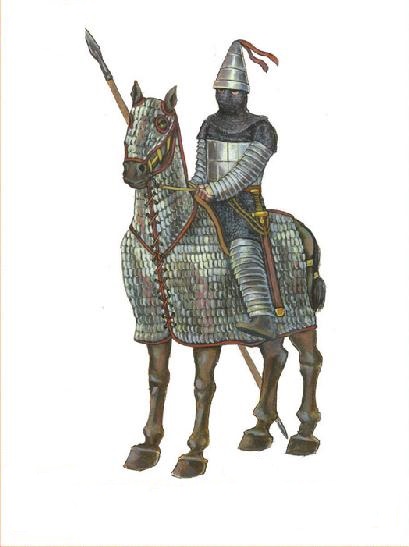
Heavy gun riders or cataphracts
The weapon used: In most cases, a long and iron spear or the use of a mace.
a thousand: They used all kinds of armor, including smooth armor and scale armor. Sometimes they used a combination of three smooth and flaky and welded. The use of welding under the main armor was always customary until the Sassanid era. These riders used a cone-shaped helmet that protected the whole head as well as the neck. In some cases, a face shield has been used. These riders were wearing armor made of scale armor or sometimes welded.
rate of usage: It has been used abundantly in some periods of Parthian kings, but in some periods it has been used very little.. Therefore, a specific number has not been given and different numbers have been used in different eras, but two thousand cataphracts were always at the service of the king and protected him and the royal family..
The most important battles: Battles between the Persian Empire and the Roman Empire, including the Battle of Carre and the Battle of Antoine
war tactics: If the enemy's army was full of cavalry, the cataphracts would attack the enemy's cavalry and destroy them. This tactic was effective against the Romans, who always had a long distance between their cavalry and infantry. The enemy attacked the infantry and destroyed them. In the battle of Carae, the troops of Crassus were composed of two parts. Riders and pedestrians. After the destruction of Crassus' infantry, his son Fabius, who was the commander of the cavalry, wanted to rush to the aid of the infantry with his cavalry, which numbered more than two thousand, but in the middle of the way, the cataphracts attacked his army and killed all the Roman cavalry. they destroyed, after a while Fabius was captured, who immediately beheaded him and dragged him around the square with his head on a spear.. Crassus was also captured in this battle, and he was sent to the king with his head cut off.
Party cavalry war(You are wearing a conical hat)
The attack of the Parthian heavy cavalry on the Roman legions
elephant riders:
The weapon used: By tying the tools to the elephant's tusk, they made the tusk very dangerous. They also put a turret on the elephant where the archers would sit and shoot at the enemy army..
a thousand: Often without armor except for the head and eyes
rate of usage: less
war tactics: They would stand in front of the rest of the army, attack the enemy and disrupt their ranks. Also, the archers shot at the enemy from the top of the elephant. Parthian elephants unlike the elephants of the Achaemenid army, which were African. Parthian elephants were bought from Indian kingdoms, so they had smaller tusks.
Possible appearance of Parthian army elephants
camel riders: after a while Parthians They conquered the southern border of the Persian Gulf, they brought the Arab kingdoms under their control, the Arabs were also obliged to give whatever they could to the Parthian government in times of war, due to having tall and strong camels, the Arabs They used to send camels to the central government during the war. In some cases, riders sat on camels and fought with a long spear . In some cases, camels were used to transport food and supplies for the soldiers.
The weapon used: Often a long spear
a thousand: Often without armor
rate of usage: medium
war tactics: They fought like cataphracts.
Infantry:
During the Parthian period, infantry was rarely used. Infantry were usually used to protect cities and fortresses. Parthian infantry consisted of light infantry and sniper infantry. Light infantry usually used leather armor or sometimes leather armor. These infantrymen often had a short spear or a double-edged sword. Infantry shooters also used a variety of shooting tools, including bows and arrows. They wore leather armor or khaftan and wore a felt hat.
A look at the Roman army, the fiercest enemy of the Parthians
The Roman army can be considered the most powerful army in the world at that time, which could handle everyone except Parthians. The Roman army had a unique discipline that is unique in the world. This army was formed from legions, each legion is mentioned between 8 thousand and 24 thousand in different sources.. The Roman army had three divisions, infantry, cavalry and navy. The Roman infantry alone had 31 separate divisions, the cavalry consisted of 17 divisions, and the navy consisted of 6 divisions.. Therefore, it is not possible to describe all these 54 columns of the Roman army in this article(Hopefully, an article will be written about the Roman army). Therefore, we will focus on the most famous of these elements, namely the segmental infantry and cavalry.
Sagamantata Infantry:
You may not have heard the name of this type of infantry, but you have undoubtedly seen it in many movies. The infantry of the Sagamantata were so named because of their plate armor called the Larica Sagamantata.. This infantry had a spear that had a short handle and above the bayonet, and to increase the range and also penetrate more, additional wood or a piece of iron with a special shape was used.. These infantrymen used a kind of short and double-edged sword called Glakias in their hands, they wore a helmet called Glik which protected the whole head, face and neck.. Also, they used a shield made of wood and covered with iron, which formed their battle formation with these shields. Among the makeups was the turtle makeup that was used to counter the enemy's shooting, their other makeup was the shape makeup that was used for the time of siege.. Cavalry defense formation was also used during the cavalry attack.
Centurion Roman. column commander
Sword of Glakias
Roman shield
Turtle makeup
Orb makeup
Anti-cavalry formation
offensive triangle
Cavalry
This armored cavalry was often made of welding material and held an oval-shaped shield. Hasta was a long spear that was specially designed and made for cavalry and was slightly different from infantry spears.. These riders usually did not use armor for their horses. Cavalry, like infantry, used Glik to cover the head. This cavalry was not a worthy opponent for the Parthians, as the Parthians easily defeated this cavalry with their cataphracts.. After increasing the Roman conquests in the northern parts of Europe, the Romans used Swaren Germanic and Frankish. These riders rode on small horses, and they had high maneuverability in the field, and most of the Romans used this cavalry for their wars with Parthians was using.
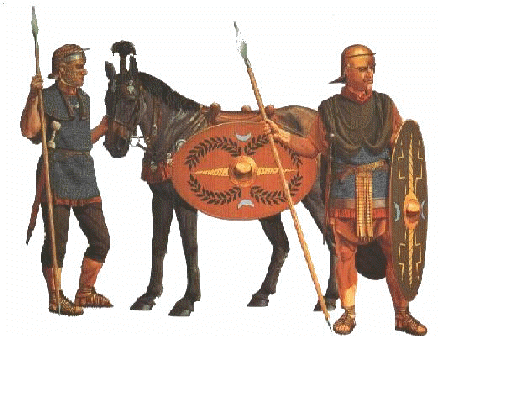
References:
Book: History of ancient Iran, Pirnia, chapter 4, 156 onwards
Book:History of Iran, Abedini, Parthah section 130 onwards
History of military technology book, Will Fire, 63 and 64
Book: History of ancient Iran, Khanji, 545 onwards and 563 onwards
Book: History of Civilization, Will Durant, Volume III, Part I, Chapter II, Roman Legion
Book: Ancient Rome, Morel, part of the Roman legions


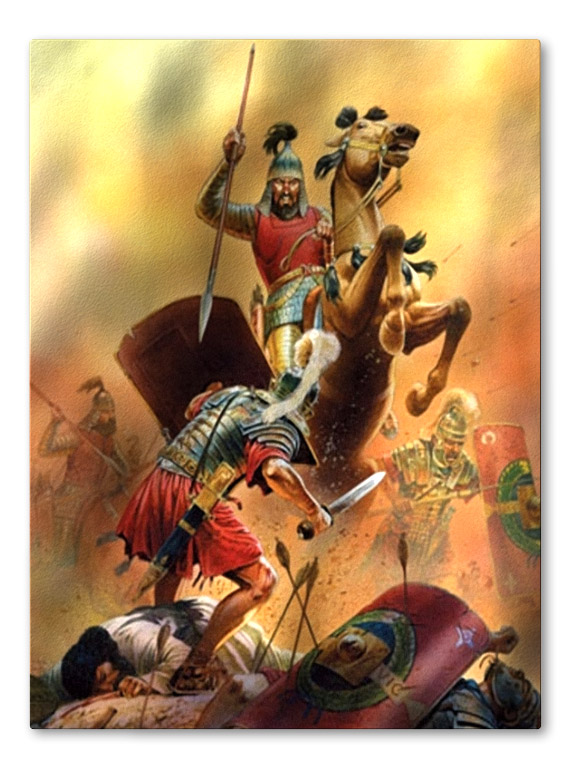
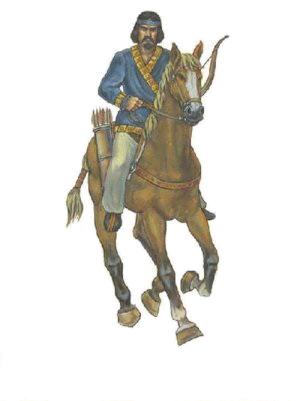
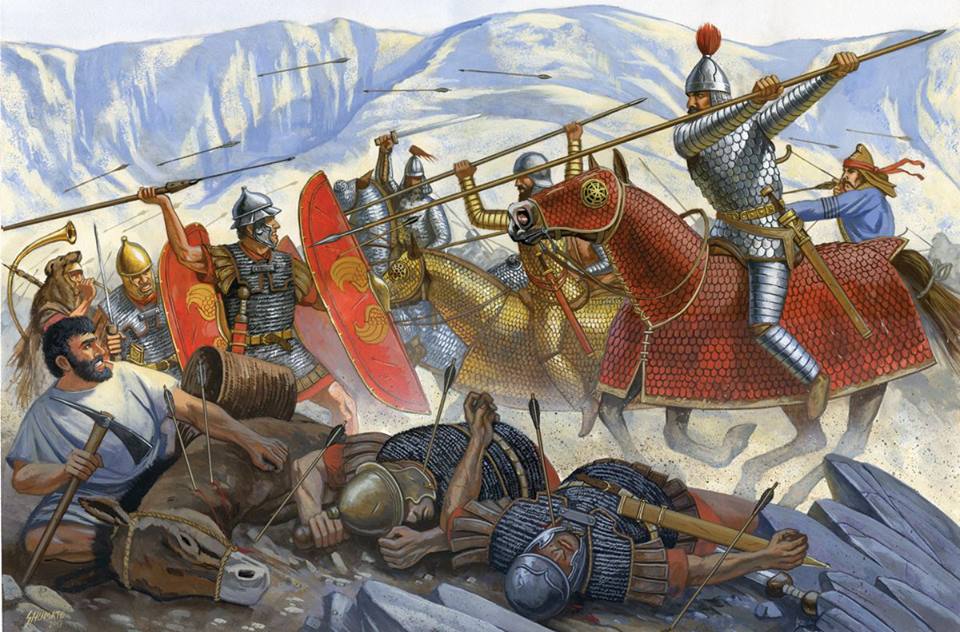
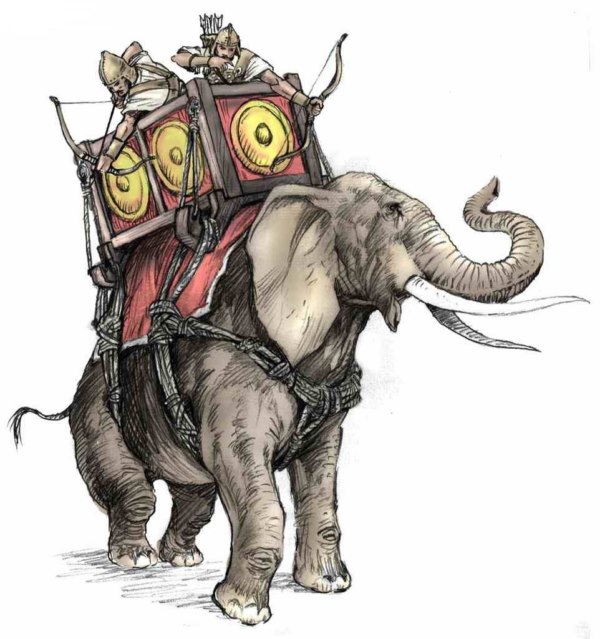
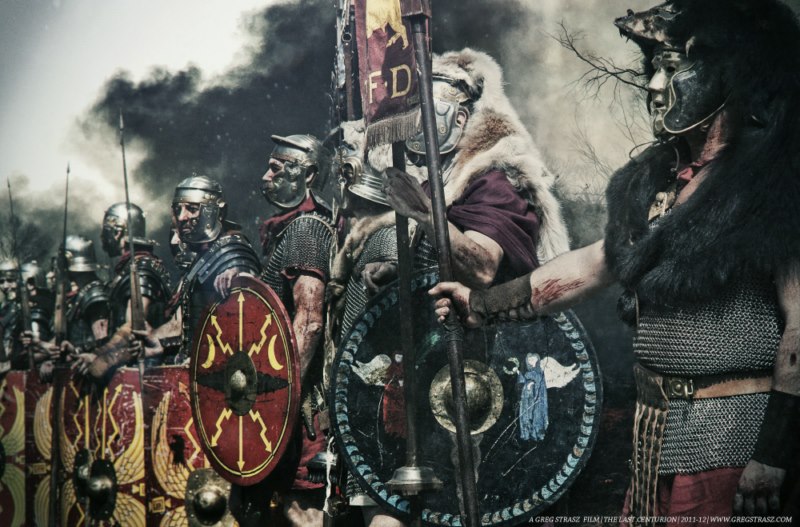
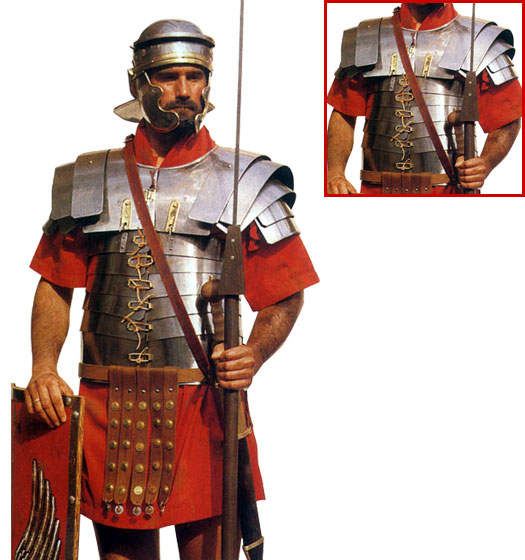
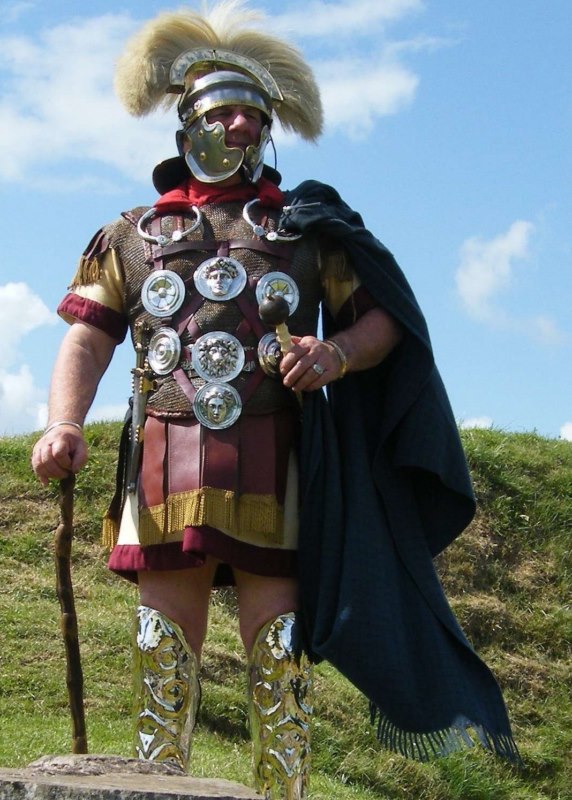
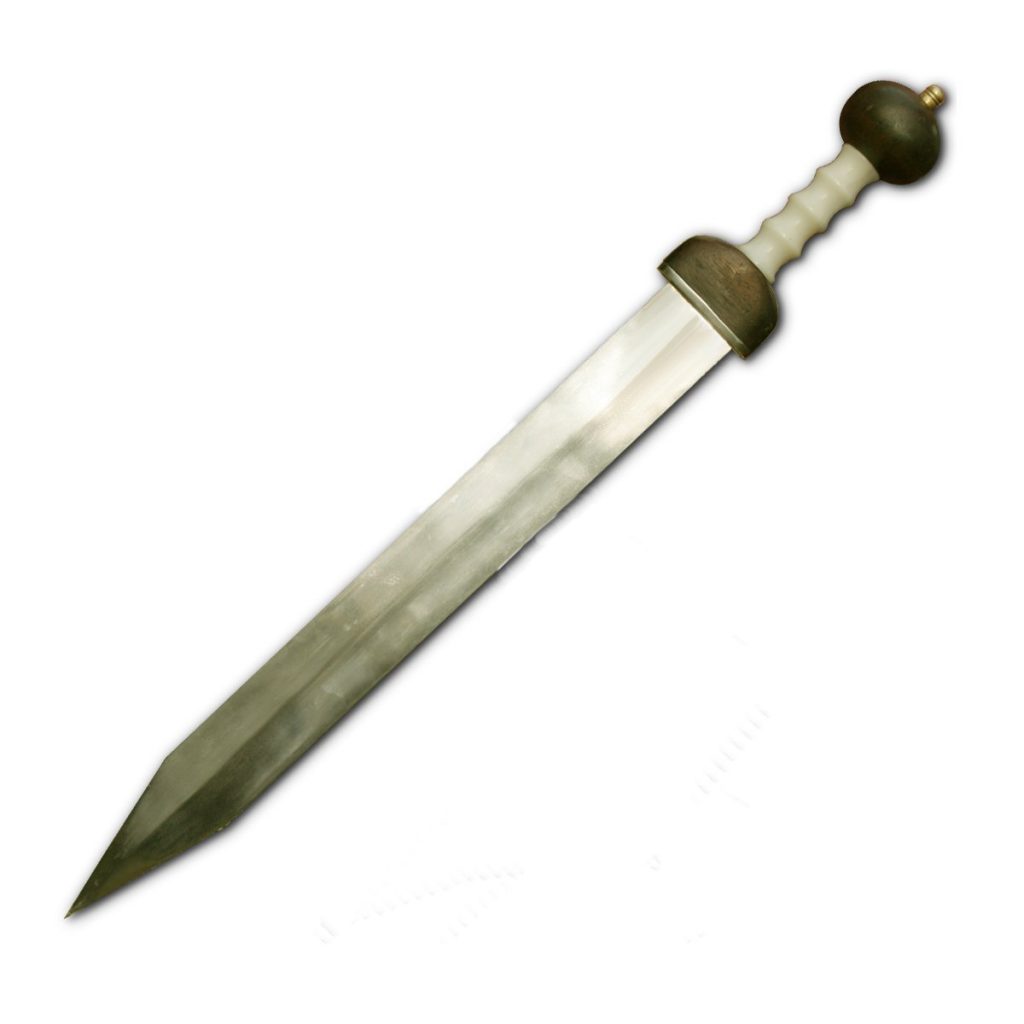
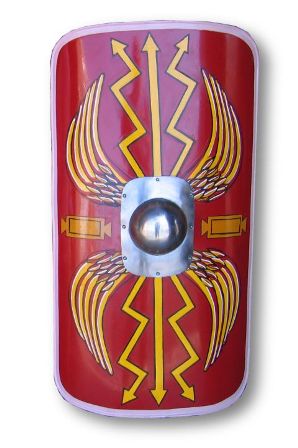
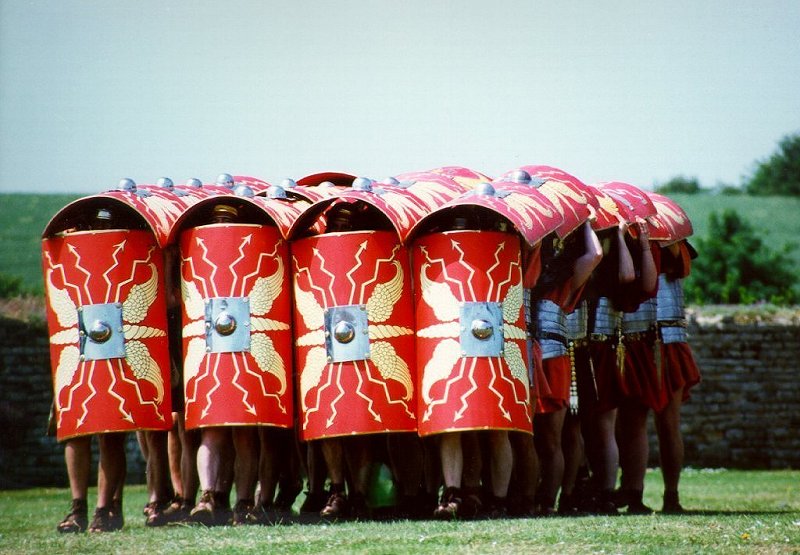
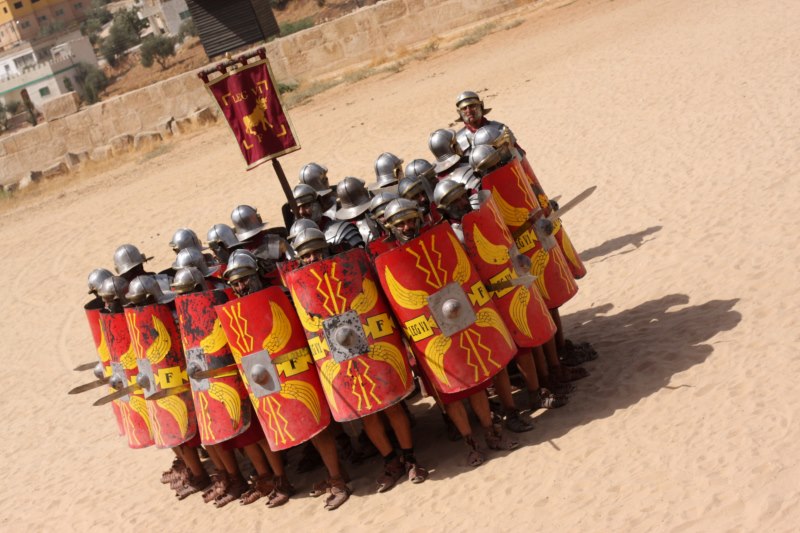
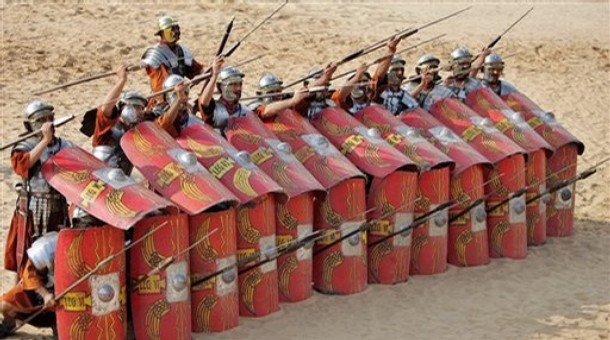
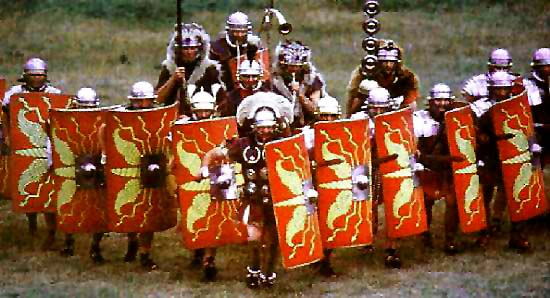
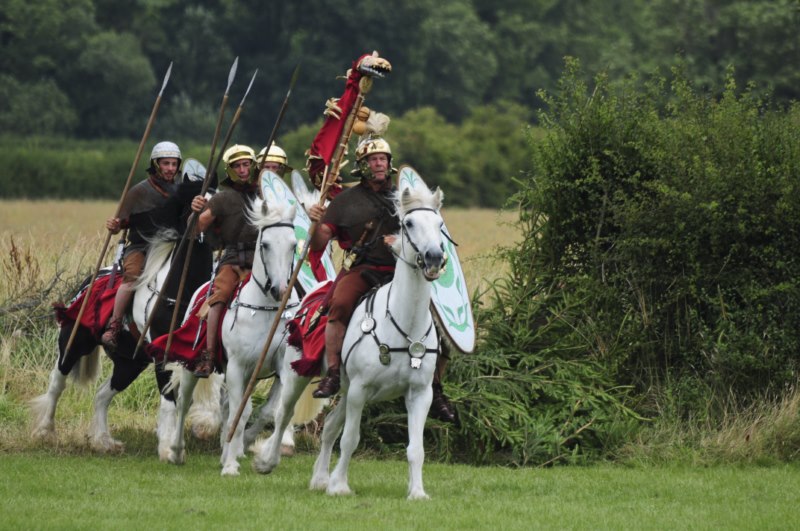

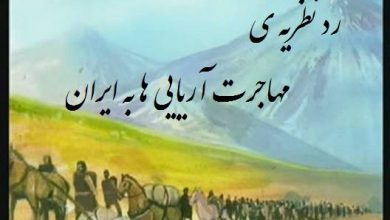
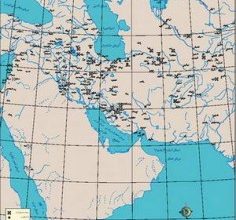
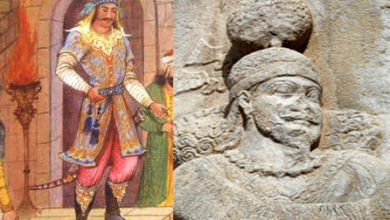
Hello, don't pay attention to words like Iran, which has no history, because these are the words of the Romans (Europeans) There is, and according to Napoleon, the genius of war, Europeans are boastful and lying people, this is not my words, it is the words of Napoleon the Great.
The name of the Parthian dynasty is derived from the name of the founder and the first king of this dynasty, which is Ashak or Arashk or Arshakes, and originally Arshakians = Arshakians or Arshakians, and of course Europeans today still call the Parthians Arsacids, which is Arsacid = Arsacids and probably The Parthians themselves called themselves Parthians or Arshakians or even Arshahians. The word Arashk is derived from the word Arash Kamandar or Arakhsh or Arsakhus, the famous archer who out of love put all his energy into throwing arrows from the bow and the word love (Arishkh) Also like Arshak, it is taken from Arash Kamandar….. According to Strabo (2000 years ago) Arashk or Ashak or Arshak was the head of a clan called Parni or Parni. The Parni clan was an Aryan clan and one of several clans that together formed a larger clan called the Dahe clan or the Dahe union. The Dahe clans are from Tajikistan. Today, they lived as far as Turkmenistan and Uzbekistan and were mostly nomads. Finally, Arshak became the head of the Perni tribe that lived in the regions of Tajikistan up to Turkmenistan at that time.…But a group also considers Arshak to be a descendant of the Persian ruler of Parth, who was a survivor of the Achaemenid kings.…However, Arshak was the first Parthian king…….. The language of decades according to Herodotus, the father of history (2500 years ago) It was half-Madian and half-Scythian, according to Herodotus, the race and origin of the Dahes was from the Persians, he says that the Persians have six urban tribes and four nomadic tribes, and the Dahes are one of these four Persian nomadic tribes, and the life of the tent they have a residence and they are placed next to the Drupiks, Pasargads, Merfas, Djousis, Sagrets and… brings and in addition Arrian, another Greek historian( About 1900 years ago) who lived during the Parthian period, says that the Parthian kings are descendants of Achaemenid Ardeshir (Achaemenid Artashtar) and they are proud of this issue, also the Parthian kings considered themselves Persians and this issue can be found even in the works or coins left by them, but perhaps Strabo called the Dahes Scythians, which may be because of the neighborhood of the Dahes with the Scythians or The linguistic similarities between the Dahes and the Scythians have been mistaken, so we are faced with four statements: Herodotus and the Parthian kings, who are older and more reliable, as well as the Arians, who say that the Parthians were Persians, and Strabo, who considers them to be Aryan Scythians, but first Although Herodotus talks about all Scythian tribes in full detail in one book, he does not talk about Scythians named Dahe or Daei or even similar and he does not consider Dahe to be Scythians, which with the precision and mastery of Herodotus, the father of history, on this subject It is clear to know that according to Herodotus, there were no Scythians called Dahes or Daeis, and in his opinion Daeis or Dahes were Persians.(Dahoui) It is called, as we know, another form of the Greek pronunciation of Dahi or Dahoui or Dahik or Dayik and…Yes, and if the Dahiks were Scythians, it would have been impossible for Herodotus not to mention them as a Scythian tribe in his book about the Scythians. and the difference between them is very clear, and the Parthians themselves, who won the war, certainly had no confrontation or fear of others, which would be a reason to hide their identity, because the Parthians also had a lot of power, and the origin of all tribes at that time was completely clear, which tribe was what It has a race and roots, and also if the Dahahs were not Persians, they could not say that they are Persians as the Dahahs, because the roots of the tribes were obvious to the common people, as well as Shahnameh, Abu Rihan Biruni and Masoudi and…Also, the roots of the Parthian kings are traced to Darius the Achaemenid and then to Kai Qabad, of course, it should be kept in mind that the Parni were part of the Parthians and were mixed in the Parthians, and at the same time, they are from the neighborhood with the Scythians in terms of clothing. Dressing and speaking had some influences, but the fact that Herodotus explained the Scythians with a keen eye and did not know the Scythians, even though he talked about the Scythians in detail in a whole book, he did not include the Scythians among the Scythian or even Median or Parthian tribes, and they has placed it next to the Persian tribes, that is when the Dahes did not have political power, which shows the true origin of the Dahes and the Parni clan. (Farah Nia or Par + Nia) And there are Parthians……..Regarding the language of the Dahes, it should be said that Herodotus means a half-Madian and half-Scythian language, a language similar to the language of the ancient Tajiks, because Dahik = Tajik, it should be known that all the Scythians spoke Aryan languages and the Medes also had an Aryan language, and also The Persian Dahikis who were in the neighborhood of the Scythians and near the Medes, it is not strange that their language is similar to the Medes and Scythians, in addition to various petroglyphs, inscriptions have been found in Turfan, China, in Parthian Pahlavi, Khwarazmi, and Persian languages. There is Middle and Manichean, all of which are in Aryan languages, because the eastern borders of the Parthians reached Turfan, China. …… The name Dahe comes from the word Dehgan or Dehghan (Great landowner) or number ten(Maybe it means one of the ten Persian clans) It has been taken, Parthian kings( And probably all Dahe people and party people) They had a loving religion and worshiped Mithras as a god, although in the Parthian empire Zoroastrian, Christian, Mesopotamian, Jewish and…also had followers ….. The Dahes were good shooters and supported the Achaemenians in various wars, and in the last battle between the Achaemenids and the Greeks, the Dahes tried hard to preserve the Achaemenid Empire, but finally after the defeat of the last Achaemenid king, Darius III, the Greeks were able to kill many of the Dahegs. to destroy them so that in the end only three clans of Pissuri, Xanthi and Parni remained until Arashk was elected as the leader of the Parni clan and by uniting the survivors of Dahe he created an alliance against the Greeks which finally led to the establishment of the kingdom It became Parthian, the names of Parthian kings are Arshak (Ar or Air or Er or Ar + Shak or Shah = Shah in the half-Med and half-Scythian language of Daheha, it is pronounced as Shak or Shak, although Shak can also mean big or chief. ) gave a seal (Mitra gave ) , Tirdad, Gooders, Sine Druk( The predatory chest or the predatory chest of the enemies of the tribe, of course, even today, Sine is pronounced Sine in the Tajik dialect.) Behnam, Milad(Mil or Mehr or Mitra + came or came ) , Blash, Khosrow and… All of them are Persian and Aryan, the Parthian government would not have been formed without the union of the Dahes with the Parthians, because the Parthian tribes of Espahbad, Soren, Mehran and… were able to destroy the Greeks with their own fighting force, in fact the Parthians were the fighting force of the Parthians, such as the Parthian Soren tribe, from which Sorena was the commander of the Iranian army, and the Parthian Soren tribe was also in charge of the king's election and coronation ceremony and was the most influential family. The Parthians were considered to be Parthians, the government of the Parthians was a tribal monarchy and included a king and several kingdoms, Strabo considered Arshak to be from Parni and Dahikis, although this could also be the case that Arshak was from the Parthian Soren tribe. Because with the influence and power of the Sorens and the fact that they have chosen the king, there is a possibility of this……Today, the survivors of Dahiks live in Tajikistan and some other countries such as China, Uzbekistan, and Afghanistan, and are known as Tajik and Persian-speaking people. In fact, Dahi in the Pahlavi Parthian language takes the ending k and becomes Dahig or Dahik. Like Parsik and… And Dahik = Tajik, which over time has changed d to t and also e to c, which is normal. .
Mehraban Moin, you really wrote a great text, thank you very much, you have really good information
For decades, they were one of the nomadic clans of Parti
Mashallah, how did you write this?
But aside from the joke, you wrote a good text
It is true that the Parthians stood in front of the Romans for a good period. But the lack of innovation and progress in military technology in the years after Christ (The last 200 years of Parthian rule) It caused successive defeats by the Romans, so that the capital of Iran fell 3 times. For this reason, the first action of Ardeshir and then Shahpur was to revise the structure of the Iranian army.
School has fallen three times, only Armenia, not the capital of Iran, the capital of Iran has never fallen in any period
Brother, Tispon, the Parthian capital, was conquered by the Romans three times during the reign of Trajan, Marcus Aurelius, and Septus Severus.
it was very good Thank you
The Parthian government was the same as the Roman Empire, and Alexander was one of the Medes who conquered Europe and popularized the Mithraic religion, and he placed hundreds of Mithraic slaves and architecture in the Roman Empire, and he founded the first republican government in history, and his council was called the Mahestan Parliament or the Roman Senate.. And unfortunately, due to the inaction of the Iranians, they destroyed this empire
Hello, don't be tired and God bless you, your work is beautiful and praiseworthy
I admire your love for the country
Did you write this yourself?
What were we and what have we become?
Well, now you don't want to politicize
Consider the size of Iran today compared to that time, how impressive we were. Now the map of Iran is shaped like a cat, but at that time it was shaped like a cow. What should we do to make it not the size of a mouse?
درود
One of my dreams was that I wish I had been born in the Parthian era and was a Parthian soldier and fought proudly for my homeland even with the least facilities and the greatest hardships. In return, I knew that magnanimity comes with courage and self-sacrifice. Courageous, clever, and Syrian, like Sorena, was my commander, and I would have been a martyr for the great Iran, for this country, with pride..
I am exactly the same tour
God, having a powerful army gives the people of a country confidence and a high sense of security. What were Iran doing at that time?!!!!!!
Of course, Rome's infantry also had a special glory, but the interesting thing is that one of the reasons for the disastrous defeat of the Roman army in the battle of Harran was that the infantry was too heavy.!!!!!
But the glory of the Parthian system is another thing.
I am really grateful
Good time. First of all, don't be tired, your cartoon was great, the text is good, but many things are not written, but in general, God bless you.
If you give wood to an Iranian Jamaat, he will stand in front of the enemy of his country